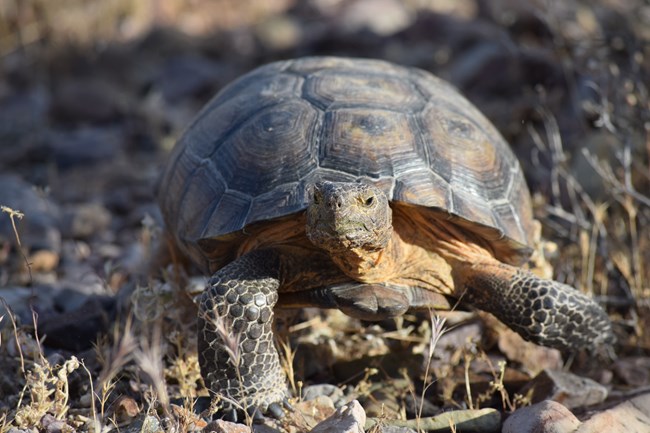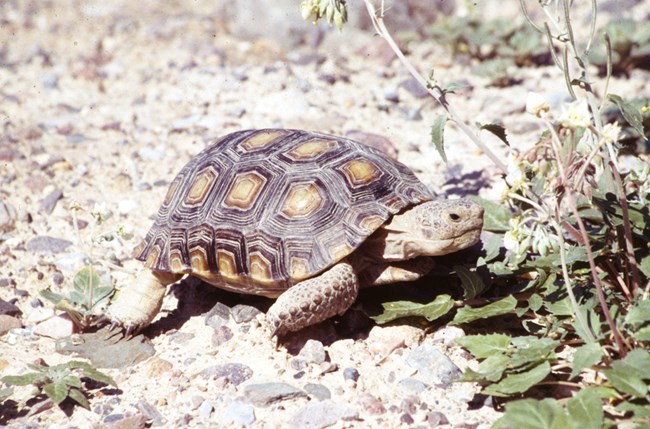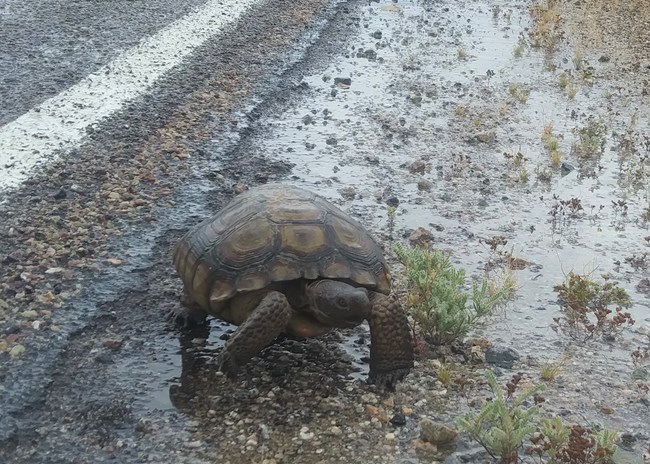Gopherus agassiziiConversation Status: 
NPS / C. Rohe Basic Biology

NPS photo DescriptionLiving forty-five to fifty years or more, the desert tortoise is an expert at desert dwelling. Like many other desert animals, the tortoise spends much of its time in a burrow underground where temperature and living conditions are not quite as extreme: cooler in the summer, warmer in the winter, and not quite as arid as on the surface. During hot periods, the tortoise may be active only in the early morning and later in the evening. In the fall and early spring, when temperatures are cooler, it may adopt a more diurnal schedule, meaning it is more active during the day. Desert tortoises will drink water when available, but they get most of their water from plants. Breeding season occurs in the spring and early summer. When a female tortoise is ready to lay her eggs, she will dig a crescent-shaped hole into which up to fourteen eggs may be laid. Temperature has an impact--incubation temperatures over 115.2 degrees F result in more females, and lower temperatures result in more males. After emerging from their shells, the hatchlings must dig themselves up to the surface. 
NPS photo ThreatsPopulations have declined rapidly in recent years due to encroachment of humans onto habitat, off-road vehicle activity, and disease. Learn about how to safely move a tortoise, courtsey of Joshua Tree National Park:
Visit our keyboard shortcuts docs for details
Learn about the only time you should move (or touch) a tortoise, and how to do it safely. |
Last updated: September 29, 2021
